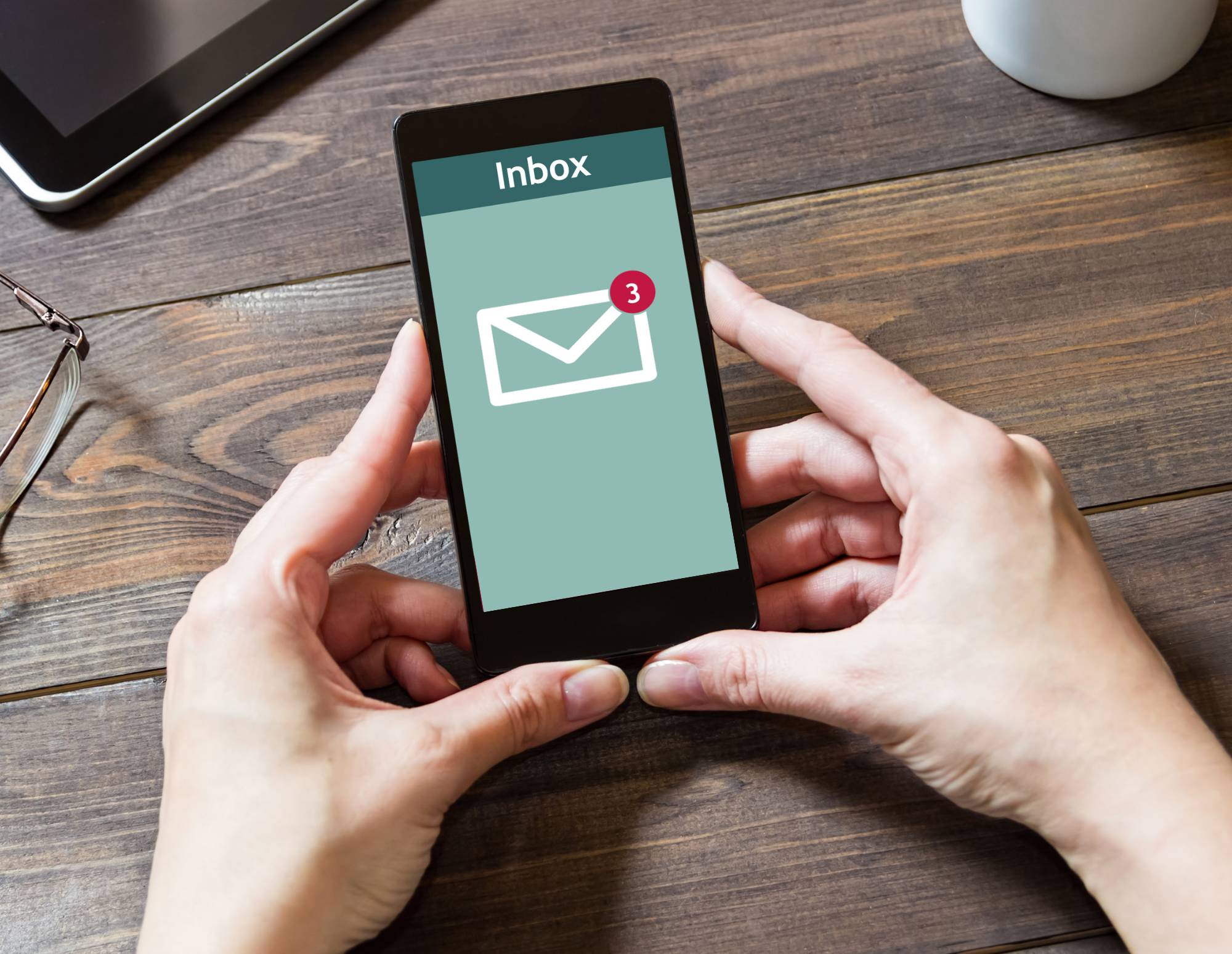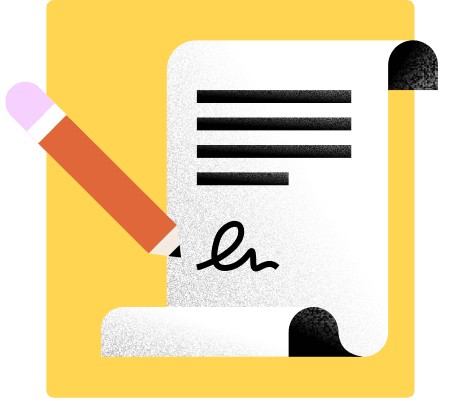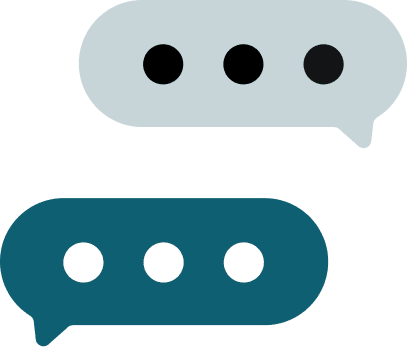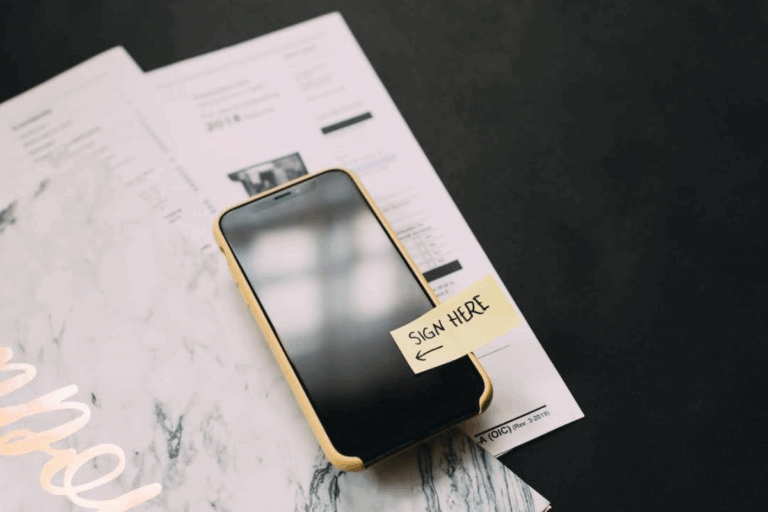Don’t let prospects leave you on read. Learn to write an introduction email to a client that connects you with a qualified prospect.

How important are introduction emails? Many independents don’t know until they’re tasked with writing one. But think back to introductory emails you’ve received in the past. Did they make you feel excited about the topic at hand? Or did you feel like their introduction was cold and impersonal?
First impressions exist online just as much as they exist in person, and your first introduction email to a new client sets the tone. Learn how to introduce yourself in an email and set the stage for your ongoing client relationship.
Jump to:
- Why would you write an introduction email to a new client?
- 7 Steps to writing the perfect client introduction email
- How to address your receiver
- How to introduce yourself eloquently
- How to propose the project
- How to close out your introduction email
- When and how would you write an introduction email for someone else?
- Common mistakes to avoid when writing a client emails

So we’ve compiled an email template for every type of correspondence.

Why would you write an introduction email to a new client?
There are a few likely reasons why you might write an introduction email to clients, especially if you’re transitioning from initial cold emails to a more personalized approach. One is that they reached out about your services, and another is that you want to sell them your services. You may also have recently booked a client, and need an engaging way to begin your client onboarding process. We’re big fans of introduction emails at HoneyBook because they’re personal, engaging, and repeatable.
On their most basic level, introduction emails are designed to introduce one party to another.
So how do you write one of these that can be used time and again? It’s not as hard as you might think!
7 Steps to writing the perfect client introduction email
Creating the perfect introduction email to a new client can set the tone for your future relationship. Whether you’re welcoming them aboard or introducing your services, it’s crucial to make a strong first impression. In the following section, we’ll walk you through a simple, step-by-step process to help you craft an introduction email that’s both professional and personable. By following these seven steps, you’ll ensure your message is clear, engaging, and leaves the client eager to continue the conversation. Let’s dive in!
Step 1: Write a clear subject line
The subject line is the first thing your client will see, making it a crucial element of your introduction email. A clear and relevant subject line grabs their attention and sets the right tone for the rest of your message. It should be concise yet informative, giving the recipient a quick idea of what to expect without overwhelming them.
Example subject lines:
- “Introduction from [Your Name] at [Your Company]”
- Getting Started: Introduction from [Your Name] at [Your Company]
- Introduction and Next Steps from [Your Name] at [Your Company]
Tips:
- Keep it short: Aim for 6-8 words to ensure it’s easy to read at a glance.
- Be specific: Mention your name and company to establish who you are right away.
- Avoid ambiguity: Make sure the subject line clearly reflects the content of your email, so the recipient knows it’s worth opening.
This approach helps your email stand out in a crowded inbox and increases the chances of your message being read.
Step 2: Start with a friendly greeting
The greeting sets the professional tone for your entire email, making it essential to get it right. A warm and professional greeting can establish rapport and make your introduction more personable. Addressing the client by name and using an appropriate greeting helps create an immediate connection.
Example greetings:
- “Dear [Client Name],”
- “Hello [Client Name],”
- “Hi [Client Name],”
Tips:
- Personalize the greeting: Always use the client’s name to make the email feel more personal and tailored to them.
- Match the tone: Choose a greeting that matches the formality of your relationship with the client. “Dear” for formal, “Hi” for casual.
- Avoid overly casual greetings: Stick to greetings that maintain professionalism, especially in initial communications. Avoid “Hey” or other overly casual terms unless you have an established, informal relationship.
Starting with the right greeting sets a positive tone for the rest of your email and shows that you respect the client from the very first word.
Step 3: Introduce yourself and your company
Introducing yourself and your company is crucial in establishing credibility and context for your email. This is where you give the client a clear understanding of who you are and how your company can help them. A brief and direct introduction helps to build trust and sets the stage for the rest of your message.
Example introductions:
- “I’m [Your Name], and I’m with [Your Company], where we specialize in [Service/Product].”
- “My name is [Your Name], and I represent [Your Company], a leader in [Industry].”
- “I’m [Your Name], a [Your Position] at [Your Company], where we focus on helping businesses like yours [Specific Benefit].”
Tips:
- Keep it concise: Provide essential information without overwhelming the client. Aim to convey your role and company value in one or two sentences.
- Highlight relevance: Tailor your introduction to address how your company’s services or products align with the client’s needs.
- Avoid jargon: Use clear and simple language to ensure that your message is easy to understand, regardless of the client’s industry knowledge.
A strong introduction builds the foundation for a successful client relationship by clearly communicating who you are and why you’re reaching out.
Step 4: State the purpose of the email
Clearly stating the purpose of your email helps the client understand why you’re reaching out and what you hope to achieve. This part of the email should be straightforward and focused, giving the client a clear reason to continue reading.
Example purposes:
- “I’m reaching out to introduce our services and explore how we can assist with [Client’s Specific Need].”
- “The purpose of this email is to discuss potential collaboration opportunities between [Your Company] and [Client’s Company].”
- “I wanted to connect with you to see how [Your Company] can support your goals in [Specific Area].”
Tips:
- Be specific: Clearly outline what you want to discuss or achieve with this email.
- Keep it relevant: Ensure that the purpose of your email aligns with the client’s interests or needs.
- Focus on the client: Frame the purpose in a way that highlights the benefits to the client, not just what you want.
Stating the purpose early in your email ensures the client knows exactly why you’re reaching out, which increases the chances of a positive response.
Step 5: Highlight the value proposition
Your value proposition is the core of your message. It explains how your company can address the client’s needs and why they should consider working with you. This is your opportunity to show what sets your company apart from the competition.
Example value propositions:
- “We have helped companies like yours achieve [Specific Result], and I believe we can do the same for you.”
- “Our team specializes in [Specific Service], which has led to [Positive Outcome] for our clients.”
- “With [Your Company], you’ll benefit from [Unique Selling Point], ensuring that [Client’s Need] is met efficiently.”
Tips:
- Be clear and concise: Deliver your value proposition in a straightforward manner that’s easy to understand.
- Use evidence: If possible, include specific examples or data that back up your claims.
- Focus on benefits: Highlight how your company’s strengths will directly benefit the client and address their pain points.
These steps will help you build a compelling introduction email that not only grabs the client’s attention but also clearly communicates the value you bring to the table.
Step 6: Provide a call to action
Including a clear call to action (CTA) is essential to guide the client on what to do next. Whether it’s scheduling a meeting, setting up a call, or simply replying to your email, a well-placed CTA can significantly improve engagement and help move the conversation forward.
Example CTAs:
- “Could we schedule a quick call next week to discuss how we can help with [Client’s Need]?”
- “I’d love to hear your thoughts—would you be available for a meeting on [Date]?”
- “Let me know a convenient time for us to connect, or feel free to reply with any questions.”
Tips:
- Be specific: Suggest a time or action that makes it easy for the client to respond.
- Keep it simple: Don’t overwhelm the client with too many options; focus on one clear action.
- Encourage a response: Phrase your CTA in a way that encourages the client to reply, helping to keep the conversation going.
A clear call to action directs the client on the next steps and increases the likelihood of a positive engagement.
Step 7: Close with a polite sign-off
A polite and professional sign-off leaves the client with a positive impression of your email. It wraps up your message and reinforces your enthusiasm about working with the client.
Example sign-offs:
- “Looking forward to your response. Best regards, [Your Name]”
- “Thank you for your time and consideration. Sincerely, [Your Name]”
- “I appreciate your attention and look forward to hearing from you soon. Warm regards, [Your Name]”
Tips:
- Express appreciation: Thank the client for their time and consideration, which shows respect and professionalism.
- Stay consistent: Match your sign-off with the tone of your email—keep it professional but warm.
- Include your contact information: Ensure your sign-off includes your full name, position, and any relevant contact details.
Closing with a thoughtful sign-off and a well-crafted email signature leaves a strong final impression, ensuring your email is both professional and courteous.
Pro tip
With HoneyBook, you can create email templates for different use cases. Build an email intro that you can incorporate into your automations and send along with pricing guide files, sales brochures, and more.
Cold outreach email
If you’re doing cold outreach for your services, your subject line bears even more weight. You want the potential client to open the email, not immediately press “spam→delete” like they would on any old email.
Try an authentic line like one of the following:
- “I notice [prospect’s website.com] looks great, with one suggestion…”
- “Reference from [where you found the prospect’s name]”
- “We met at [place where you met], following up!”
Think carefully about your target audience before sending an introduction email to a new client or potential customer. Stand in their shoes. If you were them, what email subject line would intrigue you enough to open and read the email? Use subject lines that will intrigue and prompt your target audience to connect with your services as an initial introduction.
Copy/paste template:
General introduction email
Hi [Prospect name],
I’m [Name] with [Company name].
It looks like you’re focused on [identifying their goal, searching for a photographer, redesigning their website, etc.] and I’d love to show you how we can help you achieve your goals.
We’ve been in business for [time range], with a specific focus on helping clients like you achieve [solution].
Let’s find time this week or next to connect. I’m excited to offer a free consultation to understand your needs and what we can do to help. Feel free to book the time that works for you! [link to your meeting scheduler]
Warmly,
[Your name]
[Your Position]
[Your Company]
[Your Contact Information]
Networking follow-up email
What if you’ve just met a potential client at a networking event?
Following up after a networking event is crucial to maintaining the connection you’ve just made. Your subject line should be engaging and serve as a reminder of your meeting, helping the recipient to recall the context of your interaction.
Try an authentic line like one of the following:
- “Great to meet you at [event name], following up!”
- “Following up on our conversation at [event name]”
- “Connecting after [event name]—let’s continue our discussion”
Think carefully about your target audience and the context of your meeting when crafting this follow-up email. Reflect on the conversation you had, and tailor your subject line and message to remind them of who you are and why you’re reaching out. Personalization is key to making your follow-up effective and memorable.
Copy/paste template:
Networking follow-up email
Hi [Prospect name],
It was great meeting you at [event name] last [day of the week]! I enjoyed our conversation about [specific topic you discussed], and I wanted to follow up to see how we might be able to collaborate moving forward.
At [Company name], we specialize in [brief description of your service or product], and I believe there’s a lot of potential for us to work together, especially in [specific area of interest mentioned during your conversation].
I’d love to continue our discussion and explore how we can assist with [client’s specific need]. Are you available for a quick call next week? Feel free to choose a time that works best for you here: [link to your meeting scheduler].
Looking forward to connecting again!
Best regards,[Your name]
[Your position]
[Your company]
[Your contact information]
Sales pitch introduction email
What if you’re reaching out to pitch your services?
When pitching your services, the subject line is crucial—it must capture attention and clearly convey the value you’re offering. Your aim is to intrigue the prospect enough to open the email and learn more about what you can do for them.
Try an authentic line like one of the following:
- “Achieve [specific goal] with [Your Company]”
- “How we can help [Prospect’s Company] succeed in [specific area]”
- “Boost your [specific metric]—our proven strategy”
Consider the specific needs and goals of your prospect when crafting your sales pitch. Personalize the subject line to align with their industry and current challenges, making your email stand out in their inbox.
Sales pitch introduction email
Copy/paste template:
Hi [Prospect name],
I’m [Your Name] with [Your Company]. I noticed that [Prospect’s Company] is focusing on [specific goal or challenge], and I believe we can help you achieve outstanding results in this area.
At [Your Company], we specialize in [brief description of your service/product] and have helped companies like yours achieve [specific results, e.g., a 20% increase in sales or improved customer retention]. I’d love to show you how we can replicate this success for [Prospect’s Company].
Could we schedule a quick call next week to discuss how we can work together? I’m available at [link to your meeting scheduler]—feel free to pick a time that works best for you.
Looking forward to the opportunity to discuss this further.
Best regards,[Your Name]
[Your Position]
[Your Company]
[Your Contact Information]
Referral-based introduction email
What if you’re introduced by a mutual connection?
When you’re referred by a mutual contact, the subject line should immediately establish this connection. This not only grabs the recipient’s attention but also builds trust from the outset.
Try an authentic line like one of the following:
- “Referred by [Mutual Contact]: [Your Company] can help with [specific need]”
- “[Mutual Contact] suggested we connect—let’s discuss [Prospect’s Company’s needs]”
- “[Mutual Contact] recommended I reach out—[specific benefit or service]”
Leverage the referral to create a strong introduction, making it clear why the mutual contact believed this connection would be valuable.
Copy/paste template:
Referral-based introduction email
Hi [Prospect name],
I’m [Your Name] from [Your Company], and [Mutual Contact] suggested that I reach out to you. [Mutual Contact] mentioned that you’re currently looking at [specific need or project], and I believe we can help.
At [Your Company], we’ve worked with [related companies or industries], achieving [specific results, e.g., improved efficiency, increased revenue]. I’d love to discuss how we can bring similar success to [Prospect’s Company].
Could we set up a time next week to explore how we can assist with [specific need]? Please feel free to choose a time that works for you here: [link to your meeting scheduler].
Thank you for considering this introduction—I’m looking forward to connecting.
Best regards,[Your Name]
[Your Position]
[Your Company]
[Your Contact Information]
Client onboarding email
What if you’re welcoming a new client?
The client onboarding process starts with a clear and welcoming email. Your subject line should be friendly and set the tone for a smooth start to your working relationship.
Try an authentic line like one of the following:
- “Welcome to [Your Company]—getting started with [Service/Product]”
- “Next steps with [Your Company]—let’s get started!”
- “We’re excited to work with you—here’s what’s next”
Ensure that the email is clear, detailed, and makes the new client feel supported as they begin their journey with you.
Copy/paste template:
Client onboarding email
Hi [Client name],
Welcome to [Your Company]! We’re thrilled to have you on board and can’t wait to get started on [specific project or service].
To kick things off, I’ve outlined the next steps below:
- [First step]: [Description of the first action item]
- [Second step]: [Description of the second action item]
- [Third step]: [Description of the third action item]
If you have any questions or need assistance at any stage, please don’t hesitate to reach out. I’m here to help and ensure that everything runs smoothly.
Let’s schedule a quick call next week to go over any details and make sure we’re all set. You can book a time that works for you here: [link to your meeting scheduler].
Looking forward to working with you!
Best regards,[Your Name]
[Your Position]
[Your Company]
[Your Contact Information]
Project kickoff email
What if you’re starting a new project with a client?
Kicking off a new project is an exciting time, and your email should reflect that enthusiasm. The subject line should emphasize the start of something important and set the tone for a productive working relationship.
Try an authentic line like one of the following:
- “Kicking off your project with [Your Company]”
- “Project kickoff—let’s get started!”
- “Excited to start our project together”
Ensure that your email is clear about the next steps and any expectations, helping the client feel confident as you begin working together.
Copy/paste template:
Project kickoff email
Hi [Client Name],
We’re excited to get started on your [specific project or service]! Our team is ready to dive in and bring your vision to life.
To ensure we’re all aligned, I’d like to schedule a project kickoff meeting where we can discuss the project timeline, deliverables, and any other details to set us up for success. You can book a time that suits you here: [link to meeting scheduler].
Looking forward to a productive collaboration!
Best regards,
[Your Name]
[Your Position]
[Your Company]
[Your Contact Information]
New client questionnaire email
What if you need initial information from a new client?
Gathering information at the start of a client relationship helps tailor your services to their specific needs. The subject line should highlight the importance of their input and make it easy for them to complete the task.
Try an authentic line like one of the following:
- “Help us get started: your input needed”
- “New client questionnaire—tell us about your goals”
- “We value your input—please complete our questionnaire”
Make it clear that the questionnaire is a key part of the onboarding process and that their responses will directly influence the success of the project.
Copy/paste template:
New client questionnaire email
Hi [Client Name],
As we begin our work together, we’d like to gather some initial information to ensure we fully understand your needs and goals. Please take a few minutes to complete this brief questionnaire: [link to questionnaire].
Your responses will help us tailor our approach and provide the best possible service. If you have any questions while filling it out, don’t hesitate to reach out—I’m here to help!
Thank you for your time, and we’re excited to get started.
Best regards,
[Your Name]
[Your Position]
[Your Company]
[Your Contact Information]
Thank you email after the first meeting
What if you want to reinforce the positive outcome of an initial meeting?
Sending a thank you email after your first meeting with a client reinforces your professionalism and sets a positive tone for future interactions. The subject line should convey gratitude and keep the momentum going.
Try an authentic line like one of the following:
- “Great to connect—next steps”
- “Thank you for meeting with us!”
- “Following up on our meeting—let’s keep moving forward”
This email should briefly recap any key points from the meeting and outline the next steps to ensure everyone is on the same page.
Copy/paste template:
Thank you email after the first meeting
Hi [Client Name],
Thank you for taking the time to meet with us today. It was a pleasure discussing [specific topic or project] and learning more about your needs. We’re excited to move forward and start working on [specific service or project].
As discussed, the next steps will be [briefly outline the next steps]. If you have any questions or need further clarification, please don’t hesitate to reach out.
Thanks again, and we look forward to a successful collaboration!Best regards,
[Your Name]
[Your Position]
[Your Company]
[Your Contact Information]
How to introduce yourself eloquently
Something to keep in mind when you’re writing an email to introduce yourself is that even though you’re introducing yourself, it isn’t about you. The introduction email to a new client is about your prospective client and creating interest in your services.
When you reach out to prospects you think would be good clients, make your opening line about why you’re reaching out to them. Then offer a quick introduction about why you’re a good fit that can solve their pain points. Why should they hire you? This is where you answer that question.
Detailing credentials isn’t about gloating about your success, either. It’s about highlighting how your achievements are compatible with the client’s needs. This is more than a resume drop; it’s a pamphlet in the form of your past that provides the answers to the client’s struggle.
How to outline the project (or propose the project)
Similar to when you introduce yourself when you propose your services it’s important to frame the service as a personal offering to the individual. A good introduction email to a new client is all about building relationships and mutual connections. You have three seconds to grip someone’s attention and pitch your idea. Try to keep your pitch condensed to two sentences. Make it punchy, personal, and engaging. Your second or third sentence should be a value proposition transition.
Focus on the potential benefits of working with someone as skilled as yourself and the exceptional service you offer. What does the prospective client have to gain? Again, avoid sales-focused pitches. Show how the prospect will benefit from your services and why that benefit is important to them.
If you’re speaking to a client who’s already booked, welcome them warmly and direct them to the next steps. For instance, you might want to include your calendar link so they can easily set up a kickoff call.
For booked clients, you may also want to let them in on the steps coming up in your client onboarding checklist. They don’t necessarily need the full list, but it can be helpful to give them the timeline from the kickoff call to the project start and any early milestones.
How to say goodbye in an introduction email to a new client
Extend a subtle invitation to connect once you’re ready to say goodbye. Mention that you’re free in the next few days and that the prospect can easily book time on your calendar with your meeting scheduler. You can also offer your contact information so they can reach out to you directly if they have more questions.
Thank the recipient for their time. Remember that they didn’t have to open your email—they chose to. Keep the close-out personal too by referring to the type of business they have. For example:
“Thank you again for your time and consideration, and I hope your freelance clients keep rolling in!”
When would you write an introduction email introducing two people (other than yourself?)
You may be asked to introduce people for a few reasons. The difference between writing your own introduction email and writing one for someone else is that you’re not selling your service anymore, you’re selling a relationship.
Your client roster is full and you can’t take on a new client
This is a good problem to have. If you have too many clients (or just the right amount) and a prospect is working on a deadline, it’s your opportunity to recommend a friend. Even if you can’t help a client, the next best way to support them is by sliding them into another independent business owner’s clientflow. Be sure it’s someone you trust, and remember, what goes around comes around.
You don’t offer the specific services a client inquired about
If you’re a graphic designer and the client inquired about website design, but you just do the visuals, not the build-out from the bottom up, it might be time to offer a strong referral for another independent. Fortunately, you know of a directory of HoneyBook Pros who can deliver on your prospect’s needs. If you can’t help them with your services, at least you can help them with a referral!
Common mistakes to avoid when writing a client emails
Even the most well-intentioned introduction emails can fall flat if certain common mistakes are made. These errors can undermine your credibility, confuse the recipient, or even prevent your message from being read at all. By being aware of these pitfalls and taking steps to avoid them, you can ensure that your introduction email is not only received but also leaves a positive impression. Below are some key mistakes to watch out for and tips on how to steer clear of them.
- Neglecting to proofread
- What to avoid: Sending an email without thoroughly proofreading it for typos, grammar errors, and incorrect information.
- Why it’s a problem: Typos and errors can make your email appear unprofessional and reduce the recipient’s confidence in your communication skills.
- Using a confusing email structure
- What to avoid: Writing an email that lacks clear structure, with disorganized thoughts or mixed messages.
- Why it’s a problem: A poorly structured email can confuse the recipient, making it hard for them to understand the key message or action required.
- Being too salesy or pushy
- What to avoid: Overloading your introduction email with sales pitches or aggressive calls to action.
- Why it’s a problem: Being too pushy can turn off the recipient, making them less likely to engage with your message.
- Ignoring mobile optimization
- What to avoid: Failing to consider how your email will appear on mobile devices, such as using large images or long paragraphs.
- Why it’s a problem: Many clients will read your email on their phone, and if it’s not optimized for mobile, they might find it hard to read or navigate.
- Overlooking the importance of timing
- What to avoid: Sending your email at a time when it’s less likely to be noticed or read, such as late at night or during weekends.
- Why it’s a problem: Poor timing can result in your email being buried in the recipient’s inbox, reducing the chances of it being opened and acted upon.
- Failing to follow up
- What to avoid: Not sending a follow-up email if you don’t receive a response to your initial introduction.
- Why it’s a problem: Clients may miss your first email or intend to respond later but forget. A polite follow-up can remind them of your message and prompt a response.
- Not aligning your tone with the client’s industry
- What to avoid: Using a tone or language that doesn’t fit the industry or client you’re addressing, such as being overly casual with a formal business or too formal with a creative agency.
- Why it’s a problem: A mismatched tone can create a disconnect and may lead the recipient to perceive you as out of touch with their industry or needs.
- Including irrelevant information
- What to avoid: Adding unnecessary details about your company or services that don’t directly relate to the client’s needs.
- Why it’s a problem: Irrelevant information can clutter your message, distract the recipient, and reduce the overall impact of your email.
- Using an unprofessional email address
- What to avoid: Sending your introduction email from a personal or unprofessional email address, such as a nickname or informal handle.
- Why it’s a problem: An unprofessional email address can diminish your credibility and make your communication seem less serious.
- Ignoring cultural differences
- What to avoid: Failing to consider the recipient’s cultural background, which might influence their expectations for formality, tone, and content.
- Why it’s a problem: Cultural missteps can lead to misunderstandings or even offend the recipient, damaging the potential for a positive relationship.
By avoiding these common mistakes, you can ensure that your introduction email is well-received and sets the right tone for a productive client relationship.
Introduction emails can be easy
Crafting introduction emails is straightforward with the right tools at your disposal. At HoneyBook, we prioritize efficient personalization, ensuring that every interaction is tailored to your client’s needs. With our customizable email templates, you can confidently reach out to potential clients and showcase your services. Don’t hesitate to send that cold email—once a prospect enters your pipeline, HoneyBook’s business management platform will help you guide them seamlessly through every step. Rest easy knowing HoneyBook is here to support your client communication at every turn.

Use HoneyBook to manage all of your client communication in one place.



